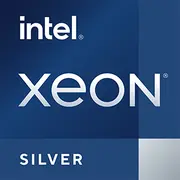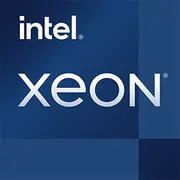Advantages
- Higher Technology: 14 nm (14 nm vs 22 nm)
- Higher Memory Type: DDR4-2400 (DDR4-2400 vs DDR3)
- Newer Launch Date: January 2020 (January 2020 vs September 2013)
Basic
Intel
Label Name
Intel
January 2020
Launch Date
September 2013
Server
Platform
Server
4210R
Model Name
?
The Intel processor number is just one of several factors - along with processor brand, system configurations, and system-level benchmarks - to be considered when choosing the right processor for your computing needs.
Xeon E5-2680 v2
Cascade Lake X
Code Name
Ivy Bridge-EP
-
Foundry
Intel
-
Generation
Xeon E5 (Ivy Bridge-EP)
CPU Specifications
10
Total Cores
?
Cores is a hardware term that describes the number of independent central processing units in a single computing component (die or chip).
10
20
Total Threads
?
Where applicable, Intel® Hyper-Threading Technology is only available on Performance-cores.
20
2.40 GHz
Basic Frequency
-
3.20 GHz
Max Turbo Frequency
?
Max Turbo Frequency is the maximum single-core frequency at which the processor is capable of operating using Intel® Turbo Boost Technology and, if present, Intel® Turbo Boost Max Technology 3.0 and Intel® Thermal Velocity Boost. Frequency is typically measured in gigahertz (GHz), or billion cycles per second.
-
-
Performance-core Base Frequency
2.8 GHz
-
Performance-core Max Turbo Frequency
?
Maximum P-core turbo frequency derived from Intel® Turbo Boost Technology.
3.6 GHz
Yes
Intel Hyper-Threading Technology
?
Intel® Hyper-Threading Technology (Intel® HT Technology) delivers two processing threads per physical core. Highly threaded applications can get more work done in parallel, completing tasks sooner.
-
No
Intel Turbo Boost Max Technology 3.0
?
Intel® Turbo Boost Max Technology 3.0 identifies the best performing core(s) on a processor and provides increased performance on those cores through increasing frequency as needed by taking advantage of power and thermal headroom.
-
2.0
Intel Turbo Boost Technology
?
Intel® Turbo Boost Technology dynamically increases the processor's frequency as needed by taking advantage of thermal and power headroom to give you a burst of speed when you need it, and increased energy efficiency when you don’t.
-
-
L1 Cache
64K per core
-
L2 Cache
256K per core
-
L3 Cache
25MB shared
-
Bus Frequency
100MHz
-
Multiplier
28.0
-
Unlocked Multiplier
No
FCLGA3647
CPU Socket
?
The socket is the component that provides the mechanical and electrical connections between the processor and motherboard.
Intel Socket 2011
14 nm
Technology
?
Lithography refers to the semiconductor technology used to manufacture an integrated circuit, and is reported in nanometer (nm), indicative of the size of features built on the semiconductor.
22 nm
100 W
TDP
115 W
-
PCIe Version
?
PCI Express is a high-speed serial computer expansion bus standard used for connecting high-speed components, replacing older standards such as AGP, PCI, and PCI-X. It has gone through multiple revisions and improvements since its initial release. PCIe 1.0 was first introduced in 2002, and in order to meet the growing demand for higher bandwidth, subsequent versions have been released over time.
3
3.0
PCI Express Version
?
PCI Express Revision is the supported version of the PCI Express standard. Peripheral Component Interconnect Express (or PCIe) is a high-speed serial computer expansion bus standard for attaching hardware devices to a computer. The different PCI Express versions support different data rates.
-
48
Number of PCI Express Lanes
?
A PCI Express (PCIe) lane consists of two differential signaling pairs, one for receiving data, one for transmitting data, and is the basic unit of the PCIe bus. Max # of PCI Express Lanes is the total number of supported lanes.
-
Yes
Intel 64
?
Intel® 64 architecture delivers 64-bit computing on server, workstation, desktop and mobile platforms when combined with supporting software.¹ Intel 64 architecture improves performance by allowing systems to address more than 4 GB of both virtual and physical memory.
-
-
Transistor Count
1.4 billions
Memory Specifications
DDR4-2400
Memory Type
?
Intel® processors come in four different types: Single Channel, Dual Channel, Triple Channel, and Flex Mode. Maximum supported memory speed may be lower when populating multiple DIMMs per channel on products that support multiple memory channels.
DDR3
1 TB
Max Memory Size
?
Max memory size refers to the maximum memory capacity supported by the processor.
-
6
Memory Channels
?
The number of memory channels refers to the bandwidth operation for real world application.
4
2400 MHz
Maximum Memory Speed
-
Yes
ECC Memory Supported
?
ECC Memory Supported indicates processor support for Error-Correcting Code memory. ECC memory is a type of system memory that can detect and correct common kinds of internal data corruption. Note that ECC memory support requires both processor and chipset support.
-
-
ECC Memory Support
Yes
GPU Specifications
-
Integrated Graphics Model
?
An integrated GPU refers to the graphics core that is integrated into the CPU processor. Leveraging the processor's powerful computational capabilities and intelligent power efficiency management, it delivers outstanding graphics performance and a smooth application experience at a lower power consumption.
N/A
Miscellaneous
Yes
Intel Deep Learning Boost (Intel DL Boost) on CPU
?
A new set of embedded processor technologies designed to accelerate AI deep learning use cases. It extends Intel AVX-512 with a new Vector Neural Network Instruction (VNNI) that significantly increases deep learning inference performance over previous generations.
-
Yes
Intel Virtualization Technology (VT-x)
?
Intel® Virtualization Technology (VT-x) allows one hardware platform to function as multiple “virtual” platforms. It offers improved manageability by limiting downtime and maintaining productivity by isolating computing activities into separate partitions.
-
Yes
Intel Virtualization Technology for Directed I/O (VT-d)
?
Intel® Virtualization Technology for Directed I/O (VT-d) continues from the existing support for IA-32 (VT-x) and Itanium® processor (VT-i) virtualization adding new support for I/O-device virtualization. Intel VT-d can help end users improve security and reliability of the systems and also improve performance of I/O devices in virtualized environments.
-
Intel® SSE4.2 | Intel® AVX | Intel® AVX2 | Intel® AVX-512
Intel Standard Manageability (ISM)
?
Intel® Standard Manageability is the manageability solution for Intel vPro® Essentials platforms and is a subset of Intel® AMT with out-of-band management over Ethernet and Wi-Fi, but no KVM or new life cycle management features.
-
1
Number of AVX-512 FMA Units
-
Yes
Enhanced Intel SpeedStep Technology
?
Enhanced Intel SpeedStep® Technology is an advanced means of enabling high performance while meeting the power-conservation needs of mobile systems. Conventional Intel SpeedStep® Technology switches both voltage and frequency in tandem between high and low levels in response to processor load. Enhanced Intel SpeedStep® Technology builds upon that architecture using design strategies such as Separation between Voltage and Frequency Changes, and Clock Partitioning and Recovery.
-
Yes
Execute Disable Bit
?
Execute Disable Bit is a hardware-based security feature that can reduce exposure to viruses and malicious-code attacks and prevent harmful software from executing and propagating on the server or network.
-
13.75 MB
Cache
?
CPU Cache is an area of fast memory located on the processor. Intel® Smart Cache refers to the architecture that allows all cores to dynamically share access to the last level cache.
-
Yes
Intel AES New Instructions
?
Intel® AES New Instructions (Intel® AES-NI) are a set of instructions that enable fast and secure data encryption and decryption. AES-NI are valuable for a wide range of cryptographic applications, for example: applications that perform bulk encryption/decryption, authentication, random number generation, and authenticated encryption.
-
Yes
Intel Volume Management Device (VMD)
?
Intel® Volume Management Device (VMD) provides a common, robust method of hot plug and LED management for NVMe-based solid state drives.
-
Yes
Intel VT-x with Extended Page Tables (EPT)
?
Intel® VT-x with Extended Page Tables (EPT), also known as Second Level Address Translation (SLAT), provides acceleration for memory intensive virtualized applications. Extended Page Tables in Intel® Virtualization Technology platforms reduces the memory and power overhead costs and increases battery life through hardware optimization of page table management.
-
Benchmarks
Geekbench 6 Single Core
Xeon Silver 4210R
859
+33%
Xeon E5-2680 v2
646
Geekbench 6 Multi Core
Xeon Silver 4210R
3985
Xeon E5-2680 v2
4147
+4%
Geekbench 5 Single Core
Xeon Silver 4210R
785
+53%
Xeon E5-2680 v2
514
Geekbench 5 Multi Core
Xeon Silver 4210R
3226
+203%
Xeon E5-2680 v2
1066
Passmark CPU Single Core
Xeon Silver 4210R
1803
+1%
Xeon E5-2680 v2
1785
Passmark CPU Multi Core
Xeon Silver 4210R
15089
+20%
Xeon E5-2680 v2
12605
Share in social media
Or Link To Us
<a href="https://cputronic.com/cpu/compare/intel-xeon-silver-4210r-vs-intel-xeon-e5-2680-v2" target="_blank">Intel Xeon Silver 4210R vs Intel Xeon E5-2680 v2</a>

